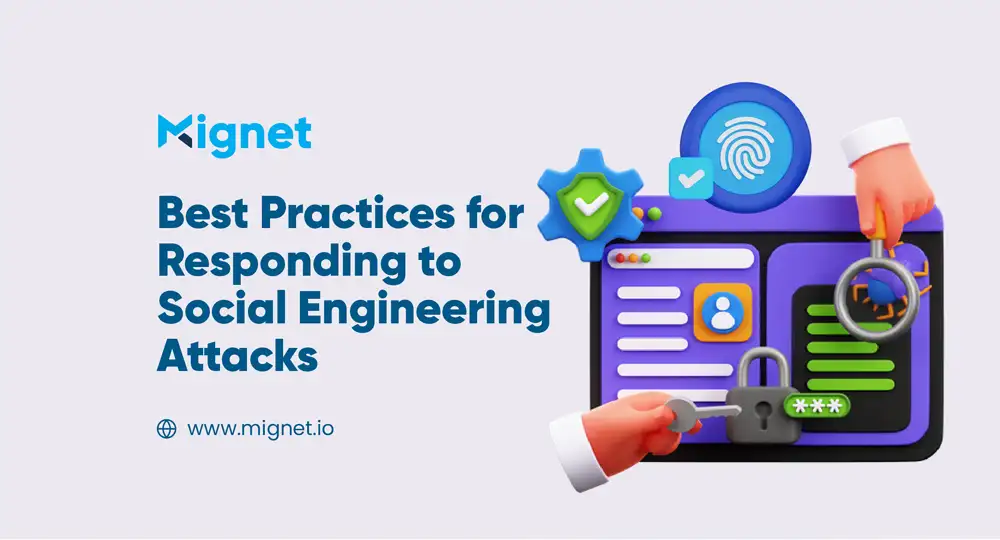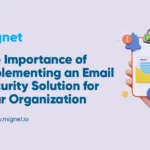
Social Engineering Attacks: Best Practices for Responding
Table of Contents
Social engineering is a manipulative technique employed by cybercriminals to deceive individuals and exploit their trust, emotions, or vulnerabilities for malicious purposes. It involves psychological manipulation rather than technical methods to gain unauthorized access to sensitive information or systems. By exploiting human behaviour and social dynamics, attackers can trick victims into revealing personal data, providing access credentials, or performing actions that compromise their security.
Social engineering attacks take various forms, such as phishing emails, phone scams, impersonation, or pretexting. Attackers often create convincing scenarios to manipulate victims into disclosing confidential information or unwittingly installing malware. These attacks exploit common human traits like trust, curiosity, fear, or ignorance. The objective of social engineering is to bypass traditional security measures by targeting individuals rather than exploiting technical vulnerabilities. To defend against social engineering, individuals and organizations need to be aware of common tactics, maintain a healthy scepticism, and practice good security hygiene by regularly updating software, using strong passwords, and being cautious with sharing sensitive information.
Types of Social Engineering Attacks
1. Email Phishing:
2. Voice Phishing (Vishing):
Deceptive phone calls that aim to trick individuals into revealing sensitive information or performing harmful actions.
3. Smishing:
Deceptive text messages (SMS) aiming to trick individuals into revealing sensitive information or performing harmful actions.
4. Scareware:
Deceptive software or pop-up messages that create fear to trick individuals into taking unwanted actions.
5. Social Media Exploitation:
Manipulating social media platforms and users to exploit personal information or spread deceptive content for malicious purposes.
6. USB Baiting:
Placing malicious USB drives in public areas to bait unsuspecting individuals into plugging them in.
7. Impersonation:
Pretending to be someone else, often online or through communication channels, with the intent to deceive.
Why Does Social Engineering Matter?
1. Personal and Financial Security
Social engineering attacks can lead to identity theft, financial loss, and unauthorized access to personal or sensitive information. Being knowledgeable about social engineering tactics helps individuals protect themselves and their financial well-being.
2. Business Protection
Organizations face significant risks from social engineering attacks, including data breaches, financial fraud, and reputational damage. Employees who are aware of social engineering techniques can help prevent these attacks and safeguard company resources.
3. Privacy Protection
Social engineering attacks often involve the manipulation of personal information. By understanding how social engineering works, individuals can better protect their privacy and prevent their personal data from being exploited.
4. Online Safety
With the increasing reliance on digital platforms and communication, knowing about social engineering helps individuals identify and avoid scams, phishing attempts, and other fraudulent activities online.
5. Mitigating Cyber Threats
Social engineering is a common tactic used in cybercrime. By recognizing and reporting social engineering attempts, individuals contribute to the collective effort in combating cyber threats and reducing their overall impact.
6. Building a Security Culture:
Awareness of social engineering creates a security-conscious culture in both personal and professional settings. When individuals are educated and alert, they become active participants in maintaining security, helping to protect themselves, their colleagues, and their organization.
Practical Steps and Preventive Measures for Safeguarding Against Social Engineering Attacks
1. Educate and Raise Awareness
One of the most effective defences against social engineering attacks is education. Train your employees, colleagues, and family members about common social engineering techniques and warning signs. Teach them to be cautious while sharing sensitive information or engaging in suspicious online activities. Conduct regular awareness programs, workshops, and simulations to reinforce security protocols.
2. Develop a Security-Conscious Culture
Promote a security-conscious culture within your organization. Encourage employees to report suspicious incidents promptly. Foster an environment where individuals feel comfortable discussing potential security risks and reporting any attempted social engineering attacks they encounter. Implement clear guidelines on how to respond to suspicious requests or unexpected communications.
3. Implement Strong Authentication Measures
Strengthen authentication practices to protect sensitive accounts and systems. Enforce the use of strong, unique passwords for every account and encourage the use of password managers. Implement two-factor authentication (2FA) or multi-factor authentication (MFA) wherever possible. This additional layer of security significantly reduces the risk of unauthorized access even if credentials are compromised.
4. Be Wary of Unsolicited Communications
Exercise caution when dealing with unsolicited emails, phone calls, or messages, especially if they request personal or sensitive information. Verify the identity of the sender or caller through trusted means before sharing any confidential details. Be particularly cautious of urgent or high-pressure requests designed to create a sense of panic or urgency.
5. Regularly Update and Patch Systems
Keep your software, operating systems, and applications up to date with the latest security patches. Regularly check for updates from trusted sources and apply them promptly. Cybercriminals often exploit vulnerabilities in outdated software to launch social engineering attacks. By staying up to date, you minimize the risk of falling victim to such exploits.
6. Use Reliable Security Software
Deploy reputable anti-malware and anti-phishing software across your organization’s systems. These tools can detect, and block known social engineering tactics, providing an additional layer of defense against attacks. Keep the security software updated to ensure it can effectively detect the latest threats.
7. Practice Data Minimization
Adopt a data minimization approach, both personally and within your organization. Collect and store only the minimum amount of data required for operations. Regularly review and delete unnecessary or outdated information. Limit access to sensitive data on a need-to-know basis and implement strict data protection measures.
8. Conduct Regular Security Assessments
Regularly assess your organization’s security posture through vulnerability scans, penetration testing, and security audits. Identify and address potential weaknesses or vulnerabilities that could be exploited through social engineering attacks. By proactively identifying and mitigating risks, you can strengthen your defences against such threats.
9. Establish Incident Response Procedures
Develop a comprehensive incident response plan that outlines the steps to be taken in the event of a social engineering attack. Define roles and responsibilities, establish communication channels, and train employees on how to respond effectively. Timely and well-coordinated responses can help minimize the impact of an attack and facilitate a swift recovery.
Conclusion
In the face of increasing social engineering threats, implementing best practices is vital to safeguard digital defences. Education, awareness, strong authentication, regular updates, and a security-conscious culture are essential. By adopting these measures, individuals and organizations can mitigate risks and protect against social engineering attacks. Stay informed, proactive, and vigilant to maintain a robust defence against manipulative tactics. Remember, a combination of preventive measures and a proactive mindset is key to safeguarding your digital assets from social engineering threats.
Unlock productivity: Join our Email List
Download Our Profile
Get to know more about Mignet Technologies by downloading our profile.



